Remember when birthday parties were about fun rather than photo opportunities? Before themed dessert tables and custom backdrops became mandatory, celebrations were simpler affairs that somehow managed to create just as many memories. In the 1980s, birthday parties weren’t meticulously curated events requiring months of planning and a small fortune—they were joyfully chaotic gatherings with predictable elements that every child recognized and anticipated. Let’s take a nostalgic journey back to those pre-social media celebrations where the only “sharing” happened face-to-face and the only “filters” were the ones parents used to develop the film weeks later.
1. The Grocery Store Sheet Cake
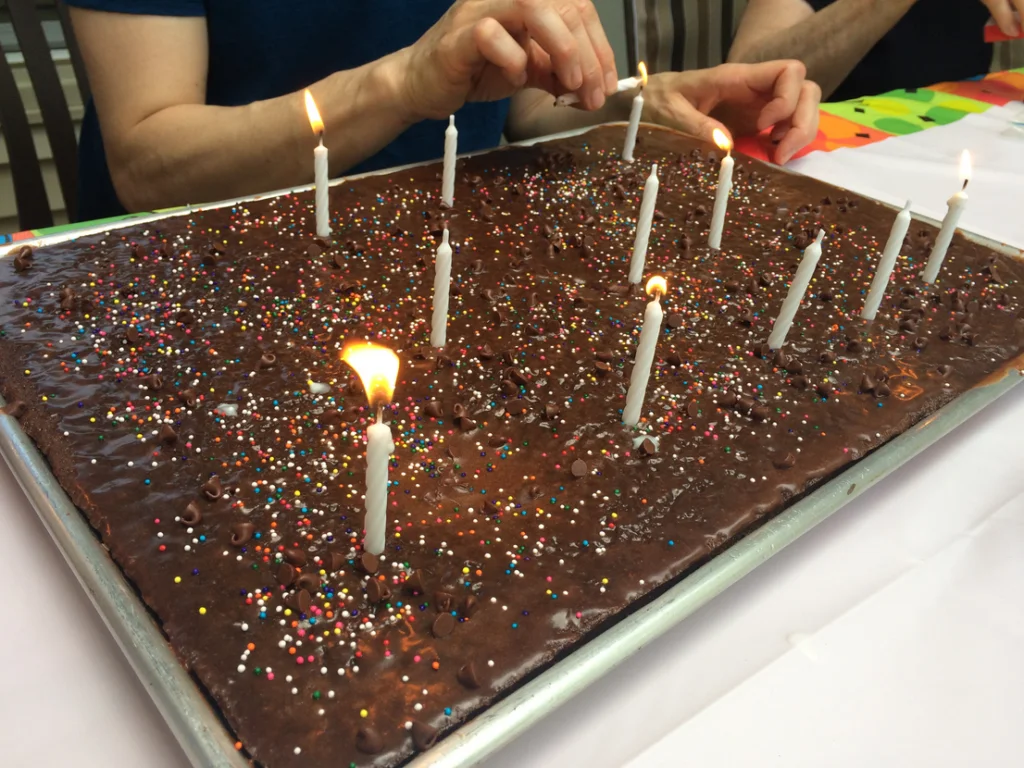
The centerpiece of any 1980s birthday celebration wasn’t a fondant masterpiece that took weeks to design—it was a sheet cake from the local grocery store bakery. These rectangular sugar bombs featured thick, artificially-colored frosting with those signature roses made of pure shortening and food coloring that would stain your tongue for hours. Your name would be written in slightly wobbly cursive, sometimes with the wrong spelling that became part of family lore for years to come. The cake would arrive in a cardboard box tied with that thin white string that Dad would struggle to untie before giving up and cutting it with kitchen scissors. Pastry Arts Magazine considers this dessert the very taste of nostalgia.
The true hallmark of these cakes was the plastic decoration placed carefully in the center—perhaps a generic clown, a licensed character that only vaguely resembled Garfield or Rainbow Brite, or those small plastic letters spelling “HAPPY BIRTHDAY” that someone always tried to lick clean after the party. Candles were either the classic striped thin ones or the numerals representing your age, which were saved in a kitchen drawer for potential reuse next year if they hadn’t melted too badly. Nobody worried about food allergies or dietary restrictions—the only question was whether you wanted the corner piece with extra frosting or a middle slice with more actual cake.
2. Party at Home in the Living Room
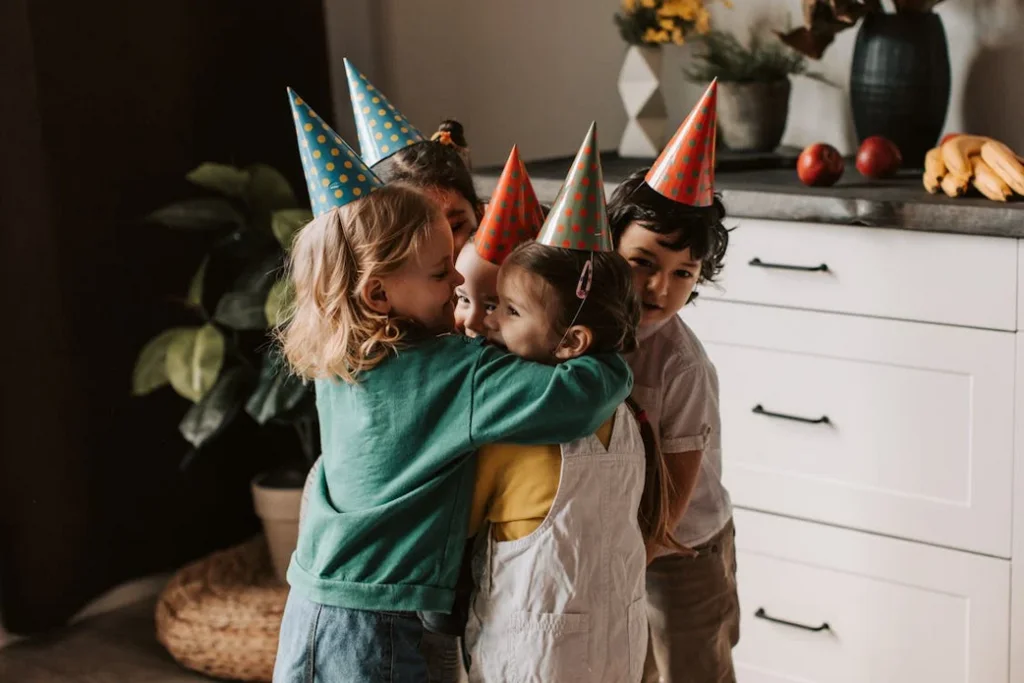
Before entertainment centers and bounce house rentals, the standard venue for birthday festivities was your own living room with the furniture pushed against the walls to create an open play space. Mom would spend the morning frantically vacuuming and hiding visible clutter while Dad was dispatched to inflate balloons until he was lightheaded. Crepe paper streamers purchased from the party aisle at Woolworth’s or K-mart were taped across doorways and wrapped around light fixtures, often falling down throughout the party only to be hastily reattached. Baby Chick argues that vintage birthday parties should absolutely make a comeback.
Decorations were wonderfully predictable—a “HAPPY BIRTHDAY” banner that was carefully folded and stored in a closet year after year, showing its age with visible creases and tape marks from previous use. Balloons were either plain colored or perhaps featured a generic “Happy Birthday” message rather than matching a coherent theme, and they were tacked up wherever they would fit rather than arranged in elaborate arches or clusters. The birthday child’s chair at the kitchen table might be adorned with special decorations or balloons to mark their importance, creating a makeshift “throne” for opening presents and blowing out candles.
3. Organized Games with Actual Winners
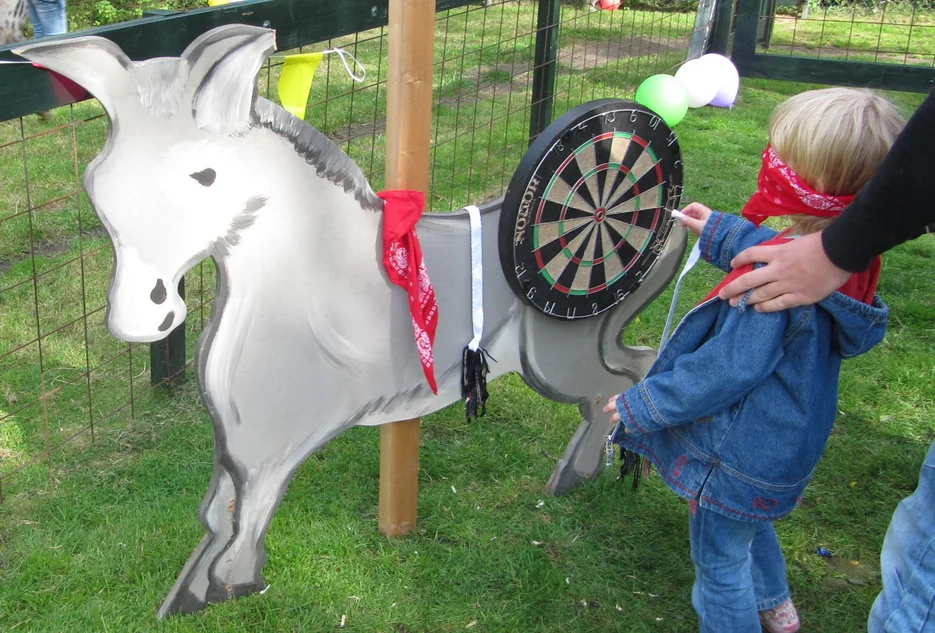
Birthday party activities in the ’80s weren’t open-ended play experiences—they were structured competitions with clear winners and losers, creating both triumphant victories and character-building disappointments. Pin the Tail on the Donkey featured a blindfolded child spinning in disorienting circles before attempting to attach a paper tail to a poster, often missing the donkey entirely and pinning it to your mom’s prized wallpaper instead. Musical chairs eliminated players one by one until a single victor remained, while Hot Potato passed around an object to music that inevitably stopped at the worst possible moment. Bustle has a whole lineup of old party games that should make a comeback.
These games weren’t designed to ensure every child felt special—they created genuine suspense with real stakes, typically small prizes like stickers or candy for the winners. Parents served as referees for heated disputes about who sat down first or whether someone peeked through their blindfold, delivering rulings that were accepted as final even when tears ensued. The birthday child might get subtle advantages in these competitions, but it wasn’t guaranteed, and learning to be a good sport when losing was considered part of growing up rather than a trauma to be avoided at all costs.
4. The Goodie Bag Revolution

The 1980s witnessed the rise of the party favor bag—that small plastic treasure trove given to guests as they departed, ensuring the celebration extended beyond the actual event. These weren’t carefully curated collections matching the party theme; they were assortments of cheap plastic toys, sugary treats, and novelties stuffed into a colorful plastic bag or perhaps a paper lunch sack decorated with stickers. The typical contents included a small container of bubbles, a plastic whistle guaranteed to drive parents insane on the car ride home, a miniature notepad, some Tootsie Rolls, a handful of Skittles, and perhaps a slap bracelet or temporary tattoo.
Assembly of these bags was often a family production the night before the party, with contents purchased from the party supply aisle and divided equally to prevent guest comparisons and accusations of favoritism. The sophisticated goodie bag might include a pencil with the birthday child’s name printed on it or a small toy related to their current obsession, whether it was dinosaurs, unicorns, or Transformers. These modest offerings were received with genuine excitement rather than judged against an Instagram standard, and the cheap plastic toys would often break before the day was over—exactly as expected.
5. Non-Themed Paper Products
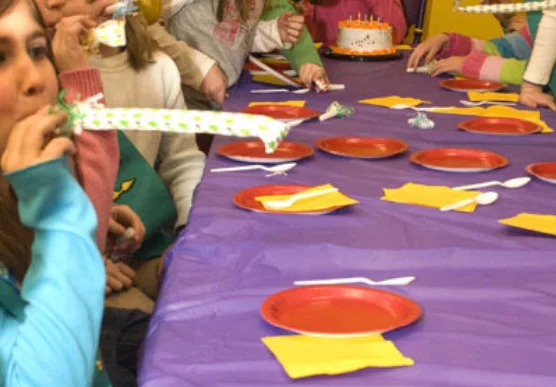
The party supply industry hadn’t yet evolved into the specialized behemoth it is today, with table settings consisting of whatever solid-colored plates, napkins, and cups were available at the local store. Matching patterns were rare, and the height of coordination was simply choosing the birthday child’s favorite color rather than adhering to an elaborate theme. The standard party plate was a flimsy paper disc barely capable of holding a slice of cake and ice cream, guaranteed to bend alarmingly in the middle and sometimes collapse entirely, creating the inevitable mid-party cleanup scramble.
Plastic tablecloths in bright primary colors covered the dining table, providing both festive atmosphere and protection against spills, with napkins distributed but largely ignored by children too excited to remember basic manners. Cups were often accompanied by those paper straws that began disintegrating minutes after contact with liquid, or perhaps those distinctive waxed paper cups with the crimped bottoms and colorful designs that tasted slightly like chemicals. Paper hats with elastic strings that invariably snapped or pinched uncomfortably might make an appearance, worn briefly for the sake of photos before being abandoned.
6. The Friends Plus Mandatory Family Mix
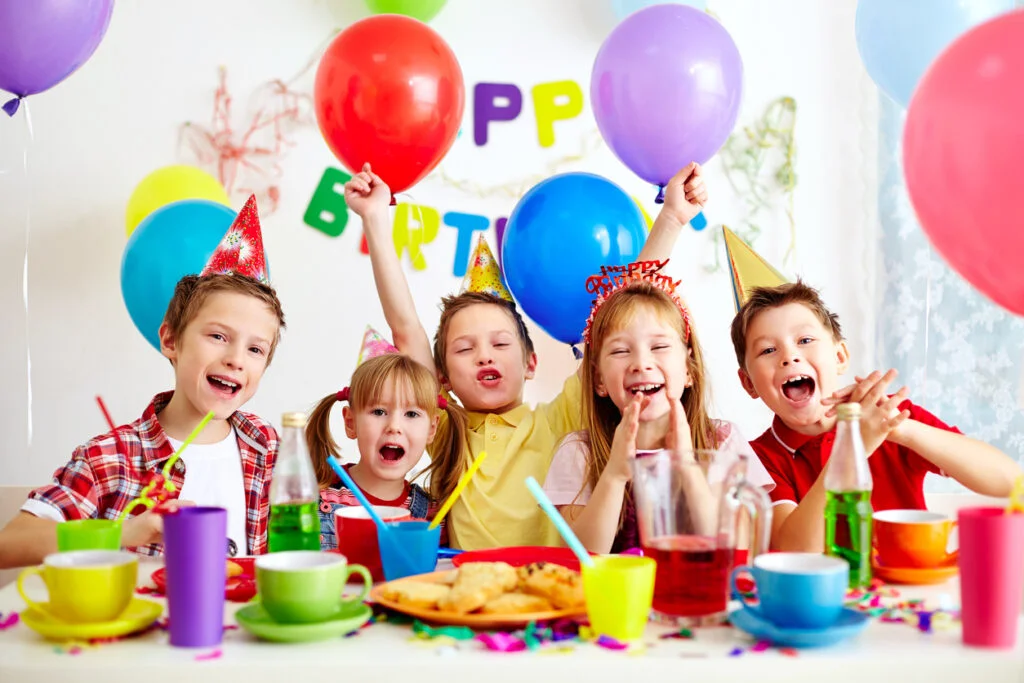
Guest lists followed a formula combining school friends (often the entire class to avoid hurt feelings) with relatives who were obligated to attend regardless of age compatibility. This created the distinctive 1980s party dynamic of children running wild while aunts, uncles, and elderly neighbors sat awkwardly on the couch, occasionally intervening when the noise level became unbearable. The resulting age mix meant that activities had to accommodate both seven-year-olds hopped up on sugar and grandparents worried about their blood pressure, creating what would now be called a “multi-generational experience” but was then just the standard birthday party demographic.
Parents of guests would often drop off their children with a hastily wrapped gift and return hours later, using the party as free childcare rather than a social obligation requiring their presence. This meant the hosting parents were responsible for managing a pack of over-excited children with minimal assistance, explaining the thousand-yard stare visible in many party photos of exhausted mothers and fathers. The upside was that children experienced remarkable freedom within this structure, forming temporary alliances and elaborate games while adults chatted in the kitchen, creating memories of independence that would last a lifetime.
7. Ice Cream Scooped Directly from the Carton
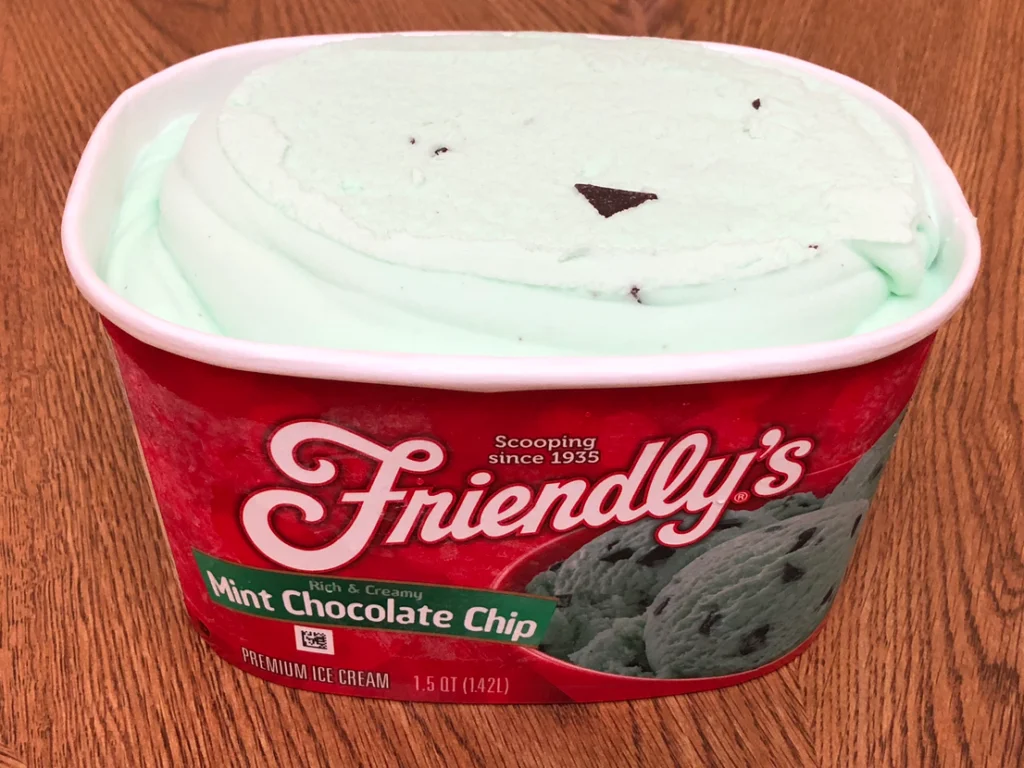
No 1980s birthday was complete without ice cream served alongside the cake, and it wasn’t artisanal or specially selected to match the theme—it was Neapolitan bought on sale or vanilla with the option of chocolate syrup. The serving process involved a parent (usually Dad) struggling with a bent metal ice cream scoop that had been hastily run under hot water, digging into a half-gallon carton that was either too frozen to penetrate or so soft it was practically soup. The resulting portions were wildly uneven, leading to whispered comparisons among guests about who received more and who was shortchanged.
The ice cream inevitably began melting before everyone was served, creating lakes of sweet liquid that soaked through the flimsy paper plates and dripped onto the plastic tablecloth or carpet. Children would attempt to dam these sticky rivers with cake crumbs, creating an even more catastrophic mess that would be discovered in hardened form under the table days later. Nobody expected the ice cream to complement the cake flavor—chocolate cake with vanilla ice cream was the standard pairing, with no consideration given to flavor profiles or aesthetic presentation.
8. The Present Opening Gauntlet
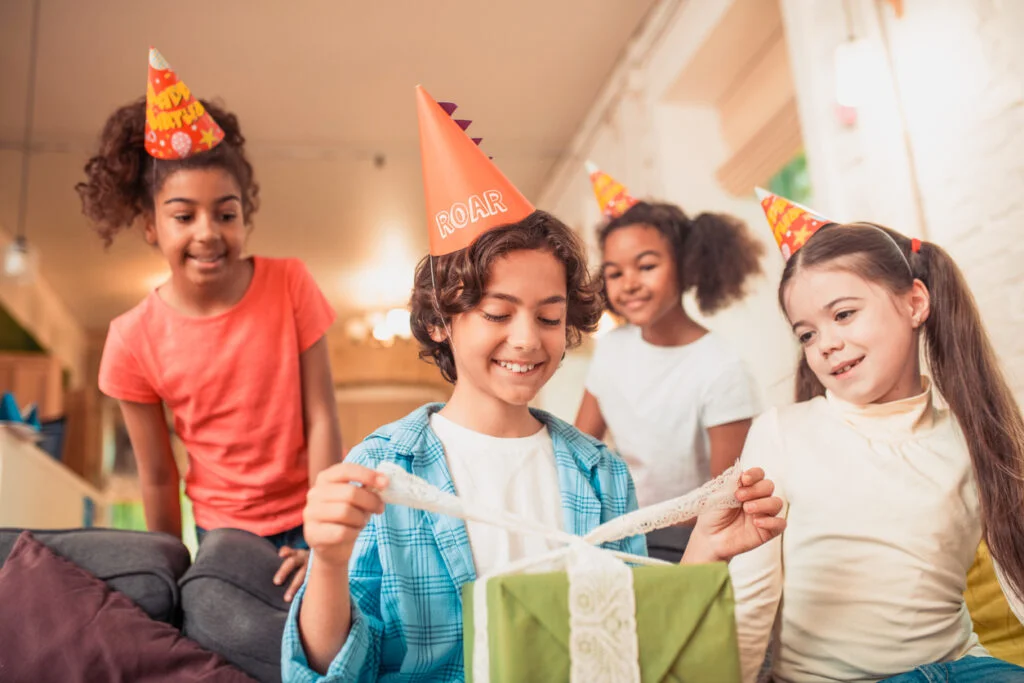
Gift opening wasn’t a tasteful, photographed sidebar—it was the main event, conducted with the birthday child seated in the center of an attentive audience expected to react appropriately to each reveal. Presents were wrapped in whatever paper was left from Christmas or purchased from the card store, without coordinating bows or personalized tags. The birthday honoree would tear through the wrapping with abandon, occasionally reading cards aloud when prodded by parents before tossing them aside to get to the good stuff.
The social pressure of this ritual was intense for all involved—gift-givers anxiously watched for a positive reaction to their selection, while the birthday child performed a delicate balance of seeming grateful while quickly moving to the next package. Parents hovered nearby to prompt the appropriate “thank you” and occasionally record who gave what on the back of an envelope for later thank-you note purposes. The present pile would grow chaotically beside the child, with discarded wrapping paper forming a separate mountain that would occasionally be stuffed into a garbage bag by an efficiency-minded adult trying to reclaim some floor space.
9. The Birthday Phone Call Tradition
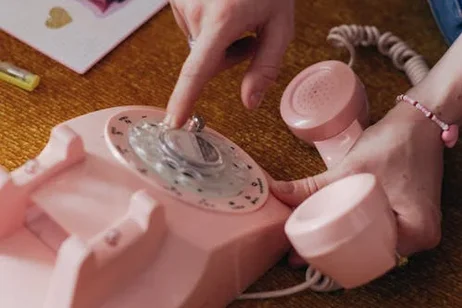
Long before text message storms and social media birthday wishes, the 1980s birthday included the special tradition of the long-distance phone call from relatives who couldn’t attend. These calls were events themselves, often coming at a predetermined time when relatives knew the party would be finished. The birthday child would be summoned to the kitchen phone (attached to the wall with a tangled cord that never quite reached far enough) to answer a chorus of slightly out-of-sync voices singing “Happy Birthday” from the other end of the line.
These awkward conversations included shouted questions about what gifts were received and whether the caller’s card had arrived in time, with the birthday child often monosyllabic with shyness while parents hovered nearby prompting more enthusiastic responses. The calls represented the broader family’s investment in the celebration despite geographic distance, and were treated with appropriate reverence despite interrupting play time. For particularly special birthdays, a relative might even place a person-to-person call, an expensive luxury that demonstrated their commitment to being part of the day despite their absence.
10. The Supermarket Party Supply Run
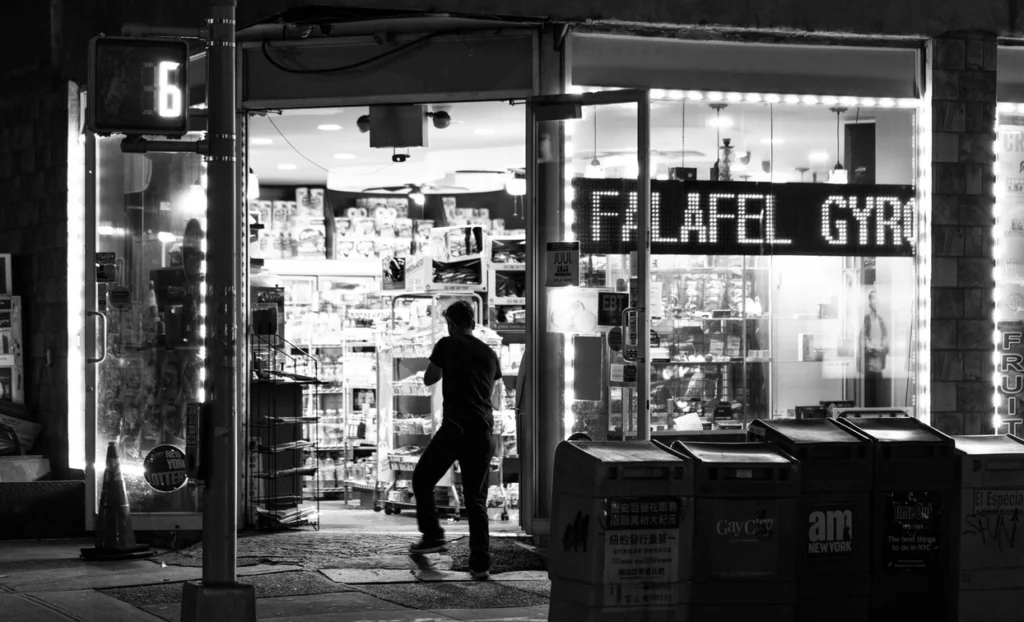
The day before (or sometimes the morning of) the party, a parent would make the obligatory trip to the local grocery or drug store to purchase everything needed in a single harried shopping trip. This one-stop approach meant that party supplies were limited to what was available on the shelves rather than ordered weeks in advance from specialty retailers. The shopping list invariably included candles, last-minute decorations, ice cream, soda in two-liter bottles, and perhaps some emergency backup chips and dip in case more guests showed up than expected.
This last-minute preparation created the distinctive 1980s party aesthetic of mismatched but functional celebration elements, with the focus on having adequate supplies rather than a cohesive visual experience. The limited selection meant that multiple birthday celebrations might feature identical decorations or cake designs, creating a shared cultural experience across different households. No one expected unique or custom elements—the fact that there was cake, ice cream, and some form of entertainment was sufficient to mark the occasion as special and worthy of memory.
11. The Flash Photography Ambush

Documentation of 1980s birthday parties wasn’t an ongoing process but a series of staged photo ambushes conducted by a parent wielding a camera with actual film that cost money to develop. This economic constraint meant photos were taken strategically during key moments—the cake presentation, the candle blowing, and perhaps a group shot of attendees if they could be corralled long enough to stand still. The birthday child would be subjected to multiple takes of the same scene as Dad checked if anyone’s eyes were closed, knowing he wouldn’t see the results for days or weeks.
The limitations of flash photography in home settings meant that many of these precious memories were preserved as either washed-out, red-eyed ghost children or mysterious dark shapes barely recognizable as human figures. The photographer would often be absent from all documentation, creating family histories where Mom or Dad seemed not to exist at their child’s celebrations. Without the ability to review images immediately, parties were experienced in real-time rather than through a viewfinder, with the developed photos arriving weeks later as a surprise reminder of events already committed to memory.
12. The Post-Party Sugar Crash
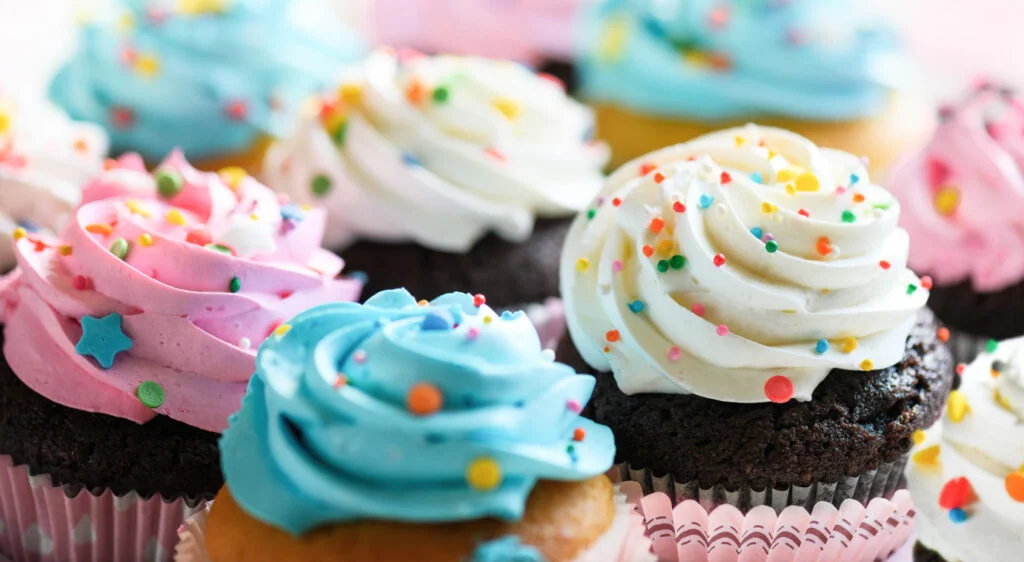
Every 1980s birthday party followed the same emotional arc, with the initial excitement building to a frenzy of sugar-fueled chaos before crashing spectacularly as guests departed. The birthday child would transition from elated celebration to tears over some perceived slight or disappointment with remarkable speed, often collapsing in exhaustion surrounded by torn wrapping paper and new possessions. Parents anticipated this meltdown as an inevitable conclusion to the festivities, sometimes even planning a quiet family activity for afterward to ease the transition back to normal life.
This emotional rollercoaster wasn’t seen as a problem to be prevented through careful planning and emotional management—it was understood as the natural consequence of excitement, sugar, stimulation, and the burden of being the center of attention for hours. The crash provided its own form of closure to the event, allowing both parents and child to acknowledge that the special day had concluded and regular rules would now resume. In its own way, this predictable pattern taught children about emotional regulation and the temporary nature of celebrations—valuable life lessons packaged within the birthday experience.
These birthday parties of the 1980s may seem quaint or even inadequate by today’s Pinterest-perfect standards, but they created core memories for a generation that learned celebrations didn’t need to be expensive or elaborately themed to be meaningful. The slightly lopsided cakes, chaotic games, and makeshift decorations reflected an approach to childhood that valued authentic experience over curated perfection. Perhaps there’s something to be learned from these simpler celebrations—the understanding that what children remember most isn’t how coordinated the party supplies were, but how special they felt surrounded by people who cared enough to celebrate another year of their wonderful, growing selves.


